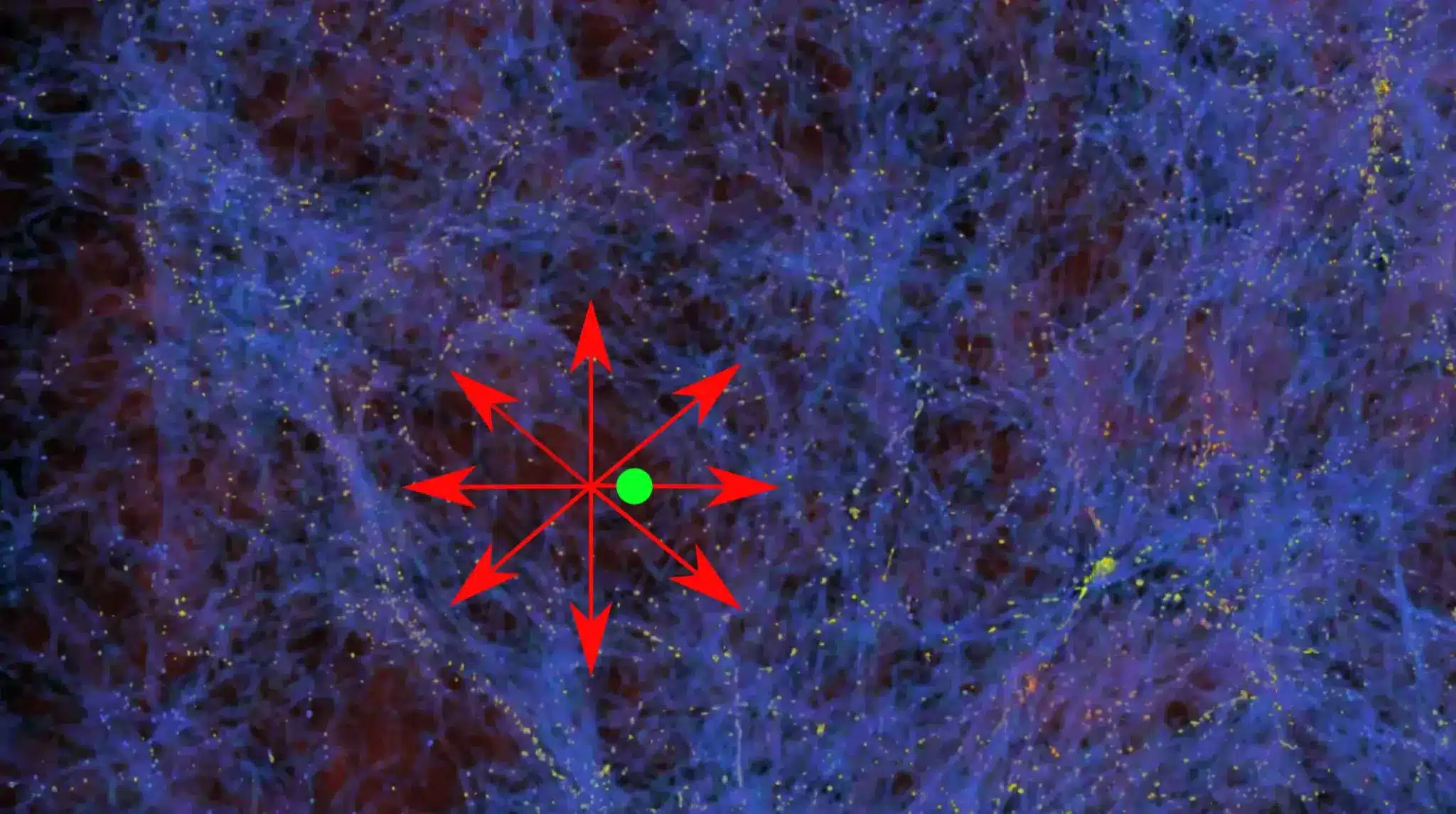About Hubble Tension
- The “Hubble tension” refers to a discrepancy between the measurements of the rate of expansion of the universe, known as the Hubble constant.
- The Hubble constant, denoted as H0, describes the rate at which galaxies are moving away from each other due to the expansion of the universe.
- If a researcher wants to estimate the Hubble constant, they have two main avenues. These are the cosmic distance ladder and the cosmic microwave background (CMB).
- Cosmic Microwave Background (CMB):
- CMB is a sea of photons, the particles of light, present throughout the universe. They are left over from the Big Bang, its afterglow.
- Scientists have measured temperature changes in the CMB and studied its large-scale properties using complicated trigonometry.
- Based on these studies, cosmologists have estimated space to be expanding at around 68 kilometres per second per megaparsec ((km/s)/Mpc). That is, an object one megaparsec (3.26 million lightyears) away is moving away at 68 km/s)/Mpc.
- Cosmic Distance Ladder:
- It is a set of techniques used to measure the distance to objects that are close, further away, or very far away from the earth. One object in particular is the Cepheid variable star.
- The Cepheid variables have a unique feature: their brightness varies in a predictable way over time.
- Based on how bright a Cepheid variable is, scientists can estimate how far away it is. Using this, cosmologists have estimated based on various Cepheid variables (and other such objects) is 73 (km/s)/Mpc.
- Thus, these measurements have yielded slightly different values for the Hubble constant. This discrepancy is known as the Hubble tension.
- The significance of the Hubble tension is that it could potentially indicate unknown physics or systematic errors in the measurements.
Resolving the tension is crucial for refining our understanding of the universe’s expansion and its underlying physics.
Q1: What is the Big Bang?
The big bang is how astronomers explain the way the universe began. It is the idea that the universe began as just a single point, then expanded and stretched to grow as large as it is right now—and it is still stretching.
Source: How fast is the universe expanding? New data keeps mystery open
Last updated on December, 2025
→ Check out the latest UPSC Syllabus 2026 here.
→ Join Vajiram & Ravi’s Interview Guidance Programme for expert help to crack your final UPSC stage.
→ UPSC Mains Result 2025 is now out.
→ UPSC Notification 2026 is scheduled to be released on January 14, 2026.
→ UPSC Calendar 2026 is released on 15th May, 2025.
→ The UPSC Vacancy 2025 were released 1129, out of which 979 were for UPSC CSE and remaining 150 are for UPSC IFoS.
→ UPSC Prelims 2026 will be conducted on 24th May, 2026 & UPSC Mains 2026 will be conducted on 21st August 2026.
→ The UPSC Selection Process is of 3 stages-Prelims, Mains and Interview.
→ UPSC Result 2024 is released with latest UPSC Marksheet 2024. Check Now!
→ UPSC Prelims Result 2025 is out now for the CSE held on 25 May 2025.
→ UPSC Toppers List 2024 is released now. Shakti Dubey is UPSC AIR 1 2024 Topper.
→ UPSC Prelims Question Paper 2025 and Unofficial Prelims Answer Key 2025 are available now.
→ UPSC Mains Question Paper 2025 is out for Essay, GS 1, 2, 3 & GS 4.
→ UPSC Mains Indian Language Question Paper 2025 is now out.
→ UPSC Mains Optional Question Paper 2025 is now out.
→ Also check Best IAS Coaching in Delhi

















